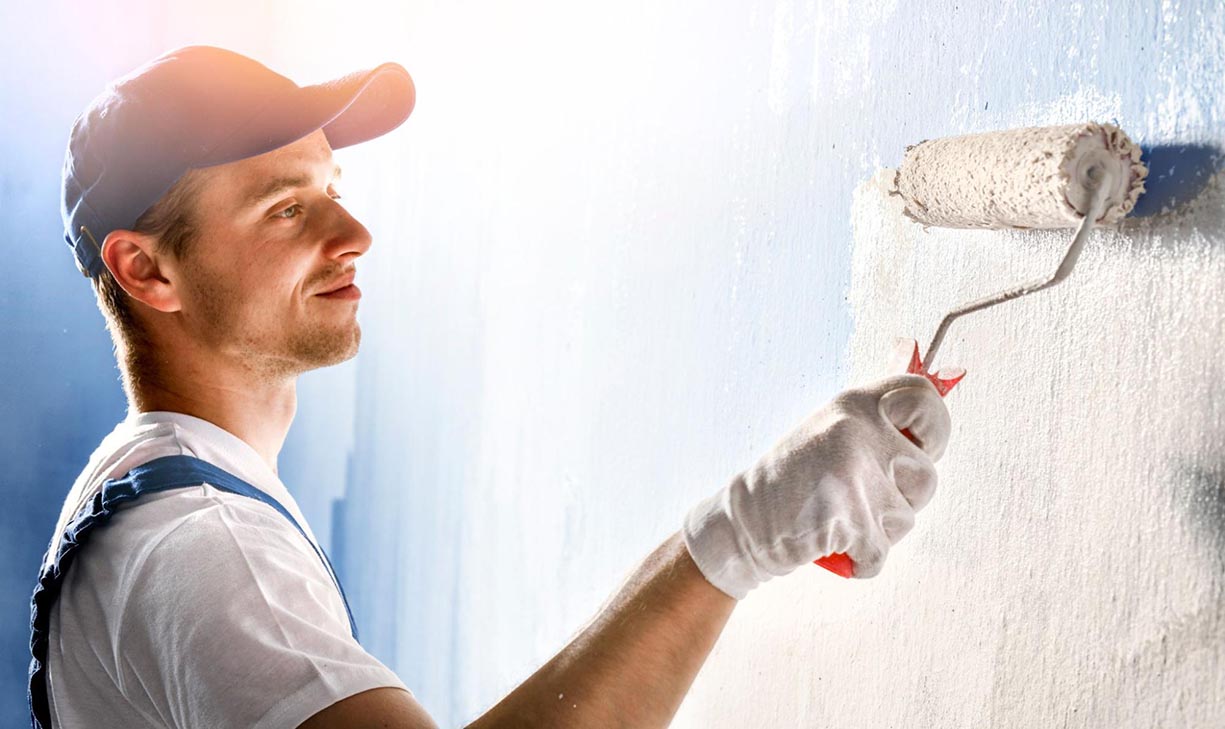Best Marketing Strategies for Painters
Understanding Your Market
Before any painter can craft a strategy for growth, they must first understand the landscape in which they operate. This involves identifying who they are trying to reach and what competing businesses are offering.
Identifying Your Target Audience
Demographic Composition: Painters must analyze the demographic makeup of their potential customers. This means pinpointing characteristics such as age, location, income level, and whether they are homeowners or involved in the construction industry.
Residential vs. Commercial: It’s crucial to distinguish between residential painting and commercial painting markets, as each has unique needs and preferences. This delineation helps tailor communication and marketing efforts effectively.
Evaluating the Competition
Market Share and Positioning: Knowing one’s competitors involves understanding their market share and how they are positioned in the industry. A careful analysis of their strategies can reveal gaps in the market a painter might exploit.
Services Offered: Assessing the range of services competitors offer gives insight into current market trends and areas of potential expansion, whether it’s residential, commercial, or specialized painting services.
Painters who thoroughly understand their audience and competition are better equipped to attract their target market and carve out a successful niche in the painting industry.
Establishing a Strong Brand
Creating a powerful brand involves careful consideration of how the business is perceived, ensuring that every element, from the business name to the online presence, aligns with the desired image and values.
Developing a Recognizable Business Name and Logo
The first step in crafting a solid brand identity is selecting a business name that is memorable and resonates with the target market. This name should be easy to remember, reflect the painting business’s core services, and have the ability to stand out among competitors. Accompanying this, a distinctive logo serves as the visual representation of the brand. It should be simple yet impactful, facilitating instant recognition and brand awareness. The business name and logo are not just identifiers but the foundation of the painter’s entire marketing and branding strategy.
Building a Professional Online Presence
In today’s digital world, a professional online presence is non-negotiable for a painting business aiming to establish strong brand awareness. At the core of this presence is a well-designed, user-friendly website that clearly communicates the painter’s services, expertise, and value proposition. Furthermore, having an effectively managed Google Business Profile can enhance local SEO, making it simpler for potential clients to discover and engage with the business via Google search and maps.
Beyond the website, consistent social media profiles across platforms like Facebook, Instagram, or LinkedIn serve as touchpoints for engaging with customers and showcasing the brand’s personality and work quality. Each element of this online presence needs to be curated to maintain brand consistency — from the imagery to the messaging — to forge a strong and lasting impression on current and prospective clients.
Leveraging Digital Marketing
In the digital age, painters need to adopt effective digital marketing strategies to stand out. It’s essential to leverage SEO, creative content, email campaigns, and paid advertising to reach a wider audience and showcase their art effectively.
Optimizing Your Website for SEO
To ensure that a painter’s website ranks high on search engines, SEO (Search Engine Optimization) is crucial. This involves the use of relevant keywords and phrases that potential buyers might use to find their work. Regularly updating the website with recent works, exhibitions, and artist statements can also improve SEO performance.
Creating Engaging Content on Blogs and Social Media
Blog posts that share insights into the creative process can engage readers and attract traffic to a website. Using social media platforms like Instagram, Facebook, Pinterest, and YouTube, artists can share their artwork and behind-the-scenes content, making use of hashtags and trends to increase visibility. On TikTok, quick, captivating videos can reach audiences quickly and should focus on high-quality visuals.
Utilizing Email Marketing and Newsletters
Email marketing and newsletters keep subscribers informed about new works, upcoming shows, and exclusive offers. They are personalized tools of engagement that complement broader content marketing strategies. This form of direct marketing can have a significant impact when used to show progress on pieces or to tell the stories behind completed works.
Investing in PPC and Online Ads
Paid options like PPC (pay-per-click) advertising and online ads increase the visibility of an artist’s works. By investing in these, painters can target specific demographics who are more likely to appreciate and buy their art. Whether it’s a local exhibition or an online sale, ads can be a powerful tool to drive significant traffic.
Expanding Your Reach
In the painting business, expansion is pivotal to attracting a broader clientele. Focusing on strategic partnerships and fostering relationships within business communities can elevate a painter’s visibility and authority.
Networking with Related Businesses and Communities
Painters should consider networking as a key component of their marketing strategy. By establishing connections with related businesses, such as construction firms, interior designers, and real estate agencies, painters can tap into existing customer bases and gain referrals. They can organize or attend events like local trade shows or home and garden expos to become more entrenched in the community. Such collaborations create mutual benefits and increase the chances of being recommended by these allied professionals.
- Construction Companies: A symbiotic relationship with builders can procure contracts for new developments needing painting services.
- Interior Designers: Their endorsement can ensure a steady stream of high-end clients who value professional finishes.
- Real Estate Agents: They can suggest a painter’s services for home staging or post-purchase renovations, optimizing a painter’s local SEO through word-of-mouth.
Exploring Partnership and Influencer Opportunities
Forming partnerships can extend a brand’s reach exponentially. By collaborating with local or industry-specific influencers, painters can amplify their brand message and obtain a mark of trust from trusted figures. Partnering with influencers involves providing them with services or experiences that they can share with their audience, thereby increasing a painter’s brand visibility.
- Local Influencers: Engaging with local lifestyle bloggers or social media personalities who can showcase a paint job transforms them into brand advocates.
- Collaborative Projects: Teaming up for community service projects or charitable events can often result in positive publicity and enhance brand reputation.
In both networking and partnership opportunities, it’s crucial to maintain consistency in branding across all activities to ensure the painting business becomes a recognizable and trusted entity in the industry.
Enhancing Credibility and Trust
In the painting industry, the reputation of a business is built on trust and the positive experiences shared by clients. Reviews and testimonials scale up credibility, while referral programs amplify word-of-mouth endorsements.
Showcasing Reviews and Testimonials
Painters can effectively bolster their reputation by highlighting customer reviews and testimonials on their websites and marketing materials. Regularly updated, authentic testimonials from satisfied customers serve as social proof that can sway potential clients. Encouraging clients to post their experiences and feedback on online platforms can lead to a greater volume of positive reviews, which in turn can strengthen the trust future customers may place in their services.
Example Testimonial Format:
- Quote: “This painting service transformed our home with their impeccable attention to detail and professional attitude. Highly recommend!”
- Reviewer: Esther G. – Satisfied Homeowner
- Source: Online reviews and video testimonials
Developing a Referral Program
Creating a referral program incentivizes word-of-mouth referrals, one of the most powerful forms of advertising. By inviting loyal customers to refer friends and family, painters can generate new leads while rewarding existing customers, thereby reinforcing the trust within their client community. Transparent referral programs with clear benefits communicate that a painter values their customers and their networks, fostering a sense of community and belonging around their brand.
Referral Program Benefits:
- For the Referrer: Earn a discount or a service upgrade on the next painting job.
- For the New Customer: Receive a first-time customer discount upon successful referral.
Building a Sustainable Marketing Plan
Creating a sustainable marketing plan involves a strategic approach that balances long-term growth with short-term gains. A painting business should consider its core services, goals, and target audience.
Defining Goals and Strategy:
Every marketing plan must start by setting clear and achievable goals. These could range from increasing brand visibility to generating more leads for new potential clients. The objectives would serve as a foundation on which strategies are built.
Identifying Services and Clients:
It’s important to highlight unique aspects of the service offered; whether it’s the quality, skill, or dedication to the craft. Knowing what sets the business apart guides the company to potential clients who value their specific expertise.
Investing in Marketing Channels:
Effective advertising channels for painters might vary, but digital platforms offer a significant opportunity to showcase a painter’s work. To attract new clients, maintaining a strong online presence should be part of the marketing plan. Strategies might include engaging content marketing on social media (8 Growth Strategies | Constant Contact), or networking within local communities to cement a solid reputation (Painter Marketing Ideas: 18 Strategies For Success – HomeStars).
Sustainability and Practices:
Sustainability is about more than environmental consciousness; it reflects a business’s ability to maintain effective marketing efforts over time. This incorporates adapting to market changes and continually meeting client expectations regarding both service and craft. Keeping abreast of the most sustainable marketing strategies ensures long-term success and resilience.
In summary, a comprehensive business plan for a painting company should weave these key aspects into a strategy that evolves and sustains the flow of new clients while nurturing existing relationships.
Frequently Asked Questions
The Frequently Asked Questions section addresses common inquiries about effective marketing strategies tailored for professionals in the painting industry.
What are the most effective digital marketing tactics for painters to attract new clients?
To attract new clients, painters should focus on search engine optimization (SEO) to improve their online visibility, and content marketing to showcase their expertise. Utilizing social media content marketing can also engage potential customers.
What kinds of promotional slogans or taglines resonate most with customers in the painting industry?
Effective taglines for the painting industry are those that are memorable and reflect the painter’s quality of work and reliability. Developing a branding strategy that includes a catchy and clear slogan helps establish brand identity.
How can painters create compelling advertising materials to showcase their services?
Compelling advertising materials use high-quality images of past work, customer testimonials, and clear calls-to-action. Painters should emphasize their unique selling points and market their painting business through brochures and business cards.
What is the best way to identify and target the ideal market demographic for painting services?
Identifying the ideal market demographic involves analyzing the local market, understanding customer needs, and specializing in services that cater to those requirements. Marketing strategies should continue to refine over time based on customer feedback.
In what ways can professional painters leverage social media to increase their customer base?
Professional painters can leverage social media by sharing before-and-after project photos, engaging with the community through posts and comments, and even using platforms such as TikTok for creative content. Social media strategies should fit the platform and target audience.
What are the key strategies for a painter to network and secure more job leads effectively?
Networking strategies include attending local trade shows, partnering with corresponding businesses like design shops, and asking for referrals. Painters can also leave door hangers or distribute flyers in local neighborhoods to secure more job leads.

